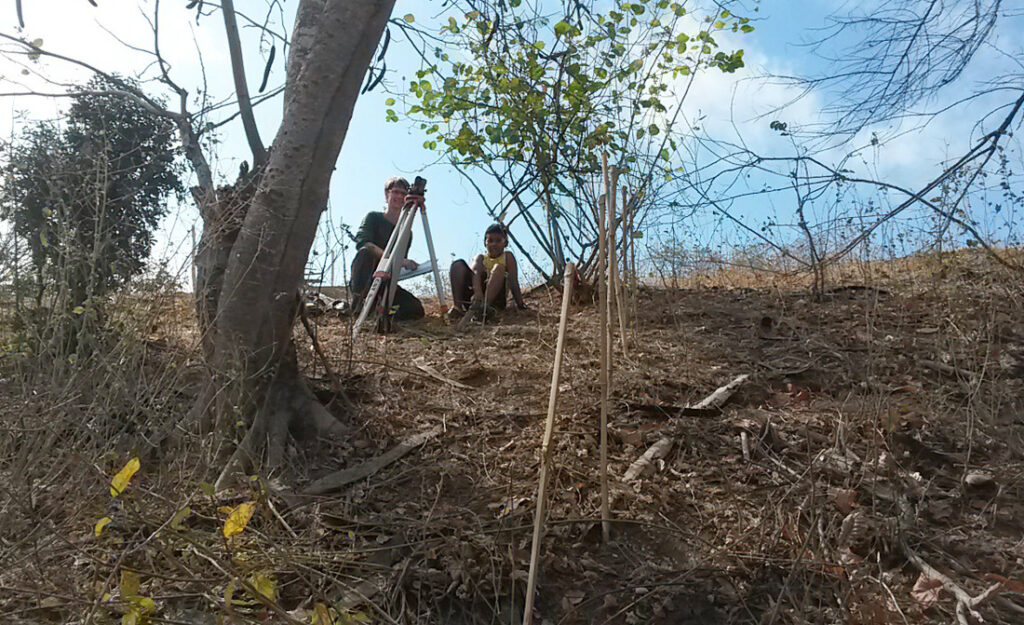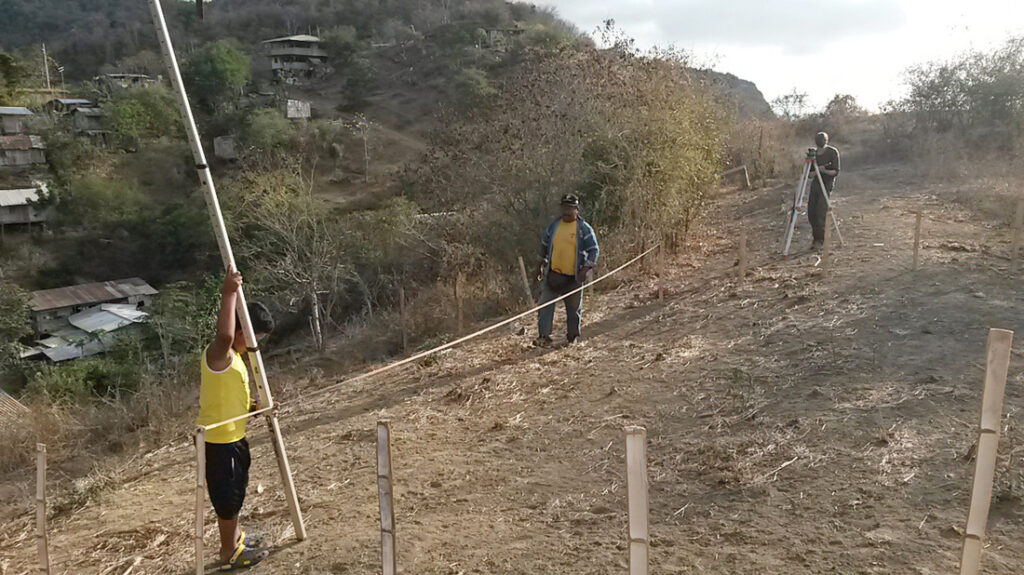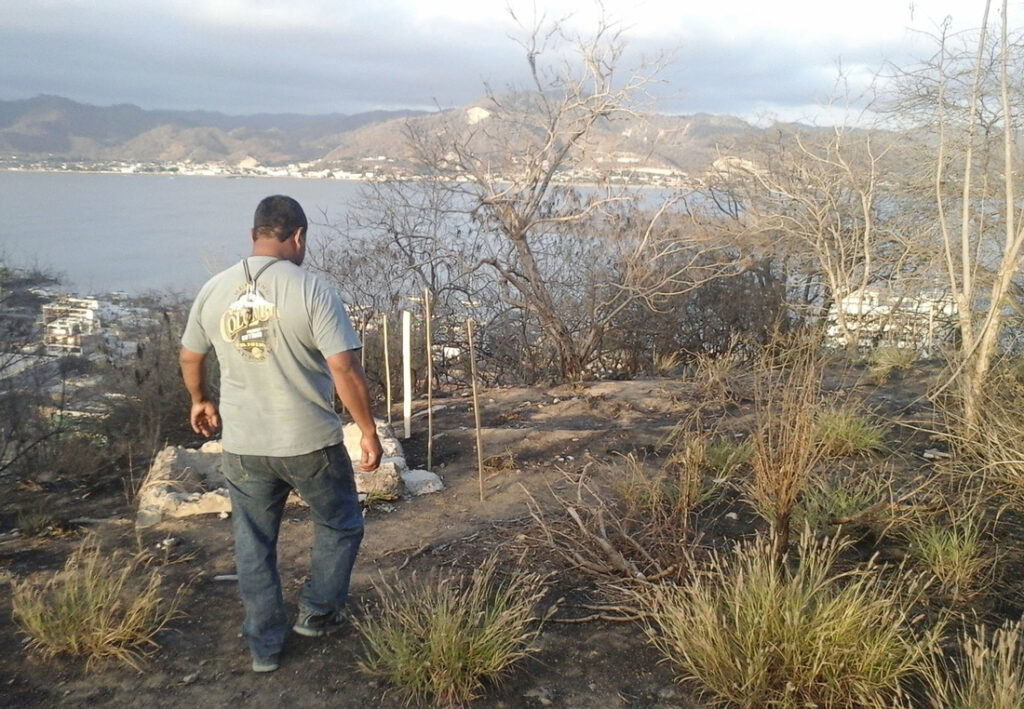Planet Drum Field Research Intern Nicolas from France has recently completed a three month erosion study on the hills near Bahía de Caráquez.
Nicolas selected five areas to study (Bellavista, La Cruz, Km. 8, and behind the greenhouse at the Catholic University). Each area has two sites (measuring 8m by 8m), one with vegetation and one without vegetation.

At each site, a concrete bollard was poured, bamboo stakes were placed, gps coordinates taken, and precise measurements of the hills elevation were obtained using a surveying (dumpy) level in a grid of 81 points (9 by 9, every meter). For more details about this work, please see blog posts related to “Field Research”.

Next year (and in subsequent years), more measurements will be taken in order to compare the rates of erosion over time at each site. This will allow for a precise measurement of the difference that vegetation makes on hillside erosion.

Nicolas worked diligently over long hours to make all of the necessary preparations, calculations, and field measurements. He has successfully initiated the first long-term study of erosion rates in the area.

This project is one example of how university students can put their environmental studies into practice while contributing to Planet Drum’s revegetation project.

Reader Interactions